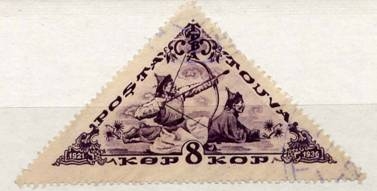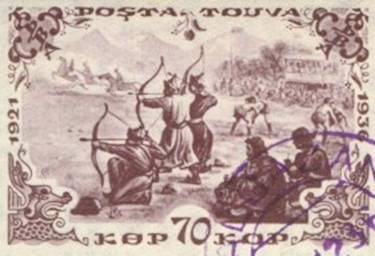Friends of Tuva 25 Years Later
August 14, 2006
by Ralph Leighton
In August, 1981, twenty-five years ago this
week, I sent out an announcement by postal mail (e-mail had not yet become
widespread) to various friends, calling their attention to August 14, 1921, when
the “shepherd’s republic of Tuva” was declared to be independent of its
traditional rulers China and Mongolia.
I’m not sure why I did it. Perhaps I wanted to
share my delight of discovery, sparked by a dinner conversation several years
earlier with the physicist, adventurer and raconteur Richard P. Feynman — who
remembered the wonderful triangular and diamond-shaped postage stamps issued in
Tuva’s name in 1936.
We wanted to know: could the romantic, nostalgic
scenes depicted on those stamps — yurt-dwelling hunters and herders with their
yaks, camels, and reindeer in winter; wrestlers, archers, and horsemen competing
in a summer festival — still be found in Tuva, fifty years later?
In our attempts to find out, we learned about
something that was not shown on the stamps: the mysterious art of throat-singing
(khöömei), in which a soloist can produce two, three, or even four tones
simultaneously. In addition, we had the pleasure of corresponding with many
interesting people, including the courageous guardian of Tuvan culture Ondar
Darymaa, and the noted Russian ethnographer Sevyan Vainshtein. And in our
attempts to reach Tuva, we accidentally arranged for the largest exhibition of
archaeological and ethnographic artifacts ever to come to the USA from the
Soviet Union. It was called Nomads: Masters of the Eurasian Steppe.
But despite these unexpected successes, we still
had not found out whether the lost world of postage-stamp Tuva still existed,
when Feynman died of cancer in 1988.
Since then, the “disorganization” I
inadvertently founded in 1981 evolved during the 1990s into a mailing list of
several hundred “friends of Tuva” who received an occasional newsletter; that
mailing list later dissolved into a website thanks to a generous Canadian from
Manitoba, Mr. Kerry Yackoboski, who still maintains it today at
www.FoTuva.org.
Today, twenty-five years later, I am struck by
how easy it is to obtain information about Tuva, now that the Internet can bring
articles, images, and sounds almost instantly to any computer. What took Feynman
and me over ten years to find out — from libraries in the USA, as well as from
individual correspondence with experts in the field — can now be found out in
less than ten minutes.
But that makes me wonder: is such an instant
overload of information perhaps not as satisfying as the gradual revelation of
one’s object of interest? And are curiosity and “the pleasure of finding things
out,” as Feynman described it, perhaps diminished by such instant information?
If so, then here’s to savoring small discoveries about the wonders of the world,
especially those of Tuva.




